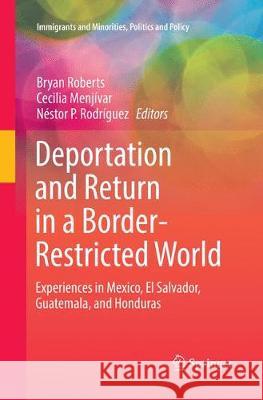Deportation and Return in a Border-Restricted World: Experiences in Mexico, El Salvador, Guatemala, and Honduras » książka
topmenu
Deportation and Return in a Border-Restricted World: Experiences in Mexico, El Salvador, Guatemala, and Honduras
ISBN-13: 9783319842394 / Angielski / Miękka / 2018 / 187 str.
Deportation and Return in a Border-Restricted World: Experiences in Mexico, El Salvador, Guatemala, and Honduras
ISBN-13: 9783319842394 / Angielski / Miękka / 2018 / 187 str.
cena 483,04
(netto: 460,04 VAT: 5%)
Najniższa cena z 30 dni: 462,63
(netto: 460,04 VAT: 5%)
Najniższa cena z 30 dni: 462,63
Termin realizacji zamówienia:
ok. 22 dni roboczych
Bez gwarancji dostawy przed świętami
ok. 22 dni roboczych
Bez gwarancji dostawy przed świętami
Darmowa dostawa!
Kategorie BISAC:
Wydawca:
Springer
Seria wydawnicza:
Język:
Angielski
ISBN-13:
9783319842394
Rok wydania:
2018
Wydanie:
Softcover Repri
Ilość stron:
187
Waga:
0.29 kg
Wymiary:
23.39 x 15.6 x 1.09
Oprawa:
Miękka
Wolumenów:
01
Dodatkowe informacje:
Wydanie ilustrowane











